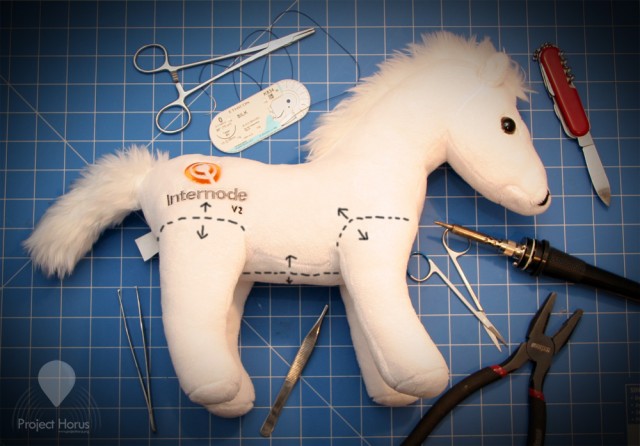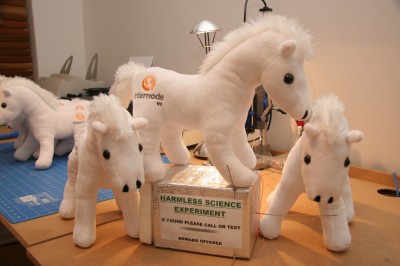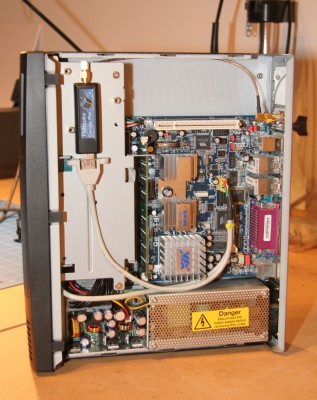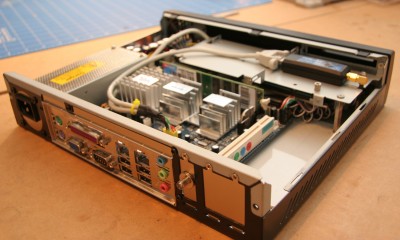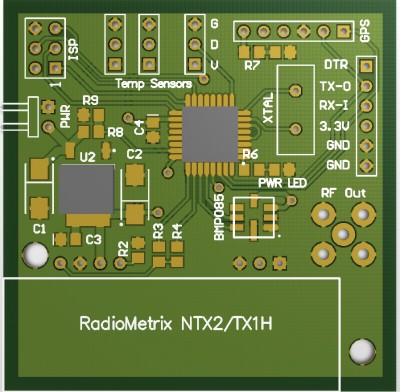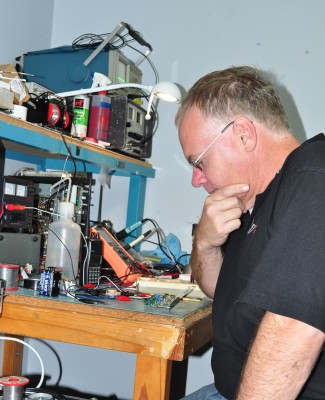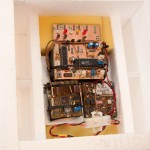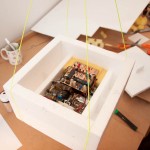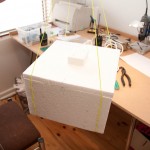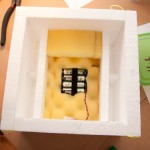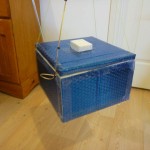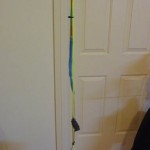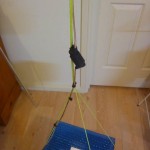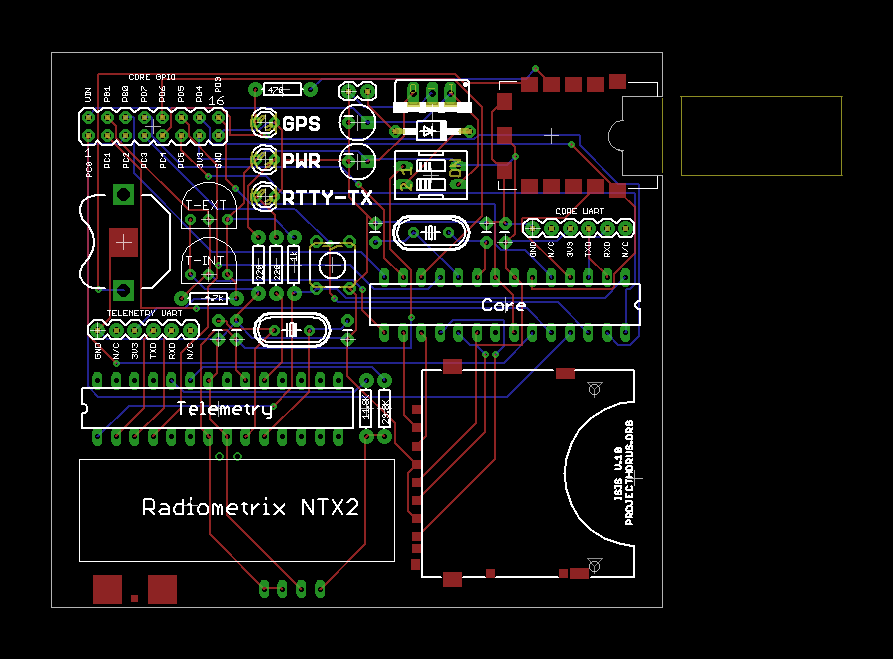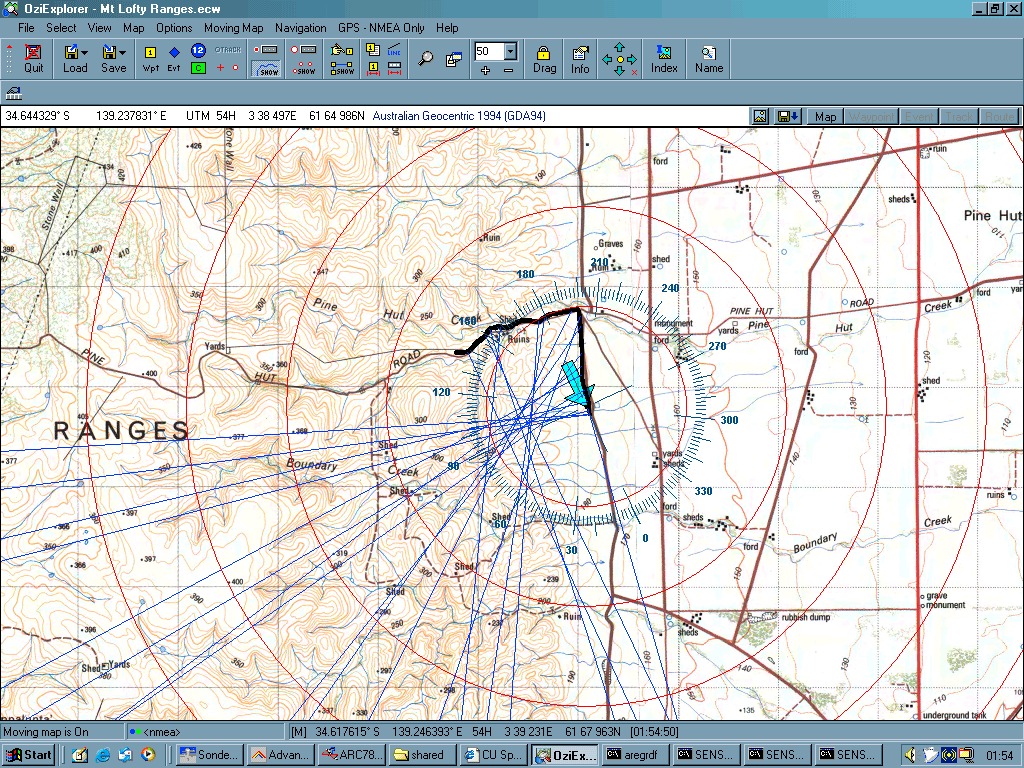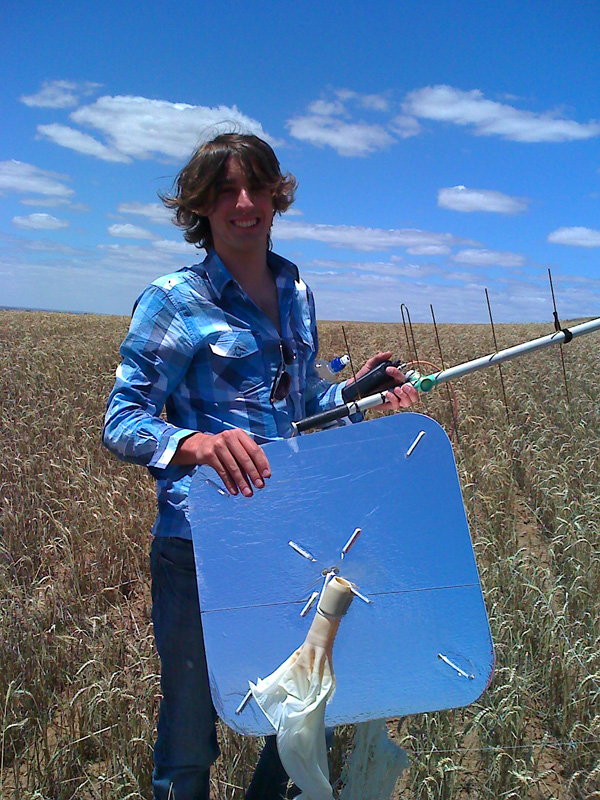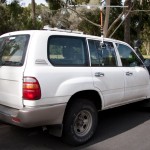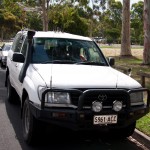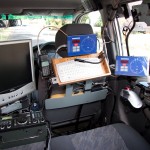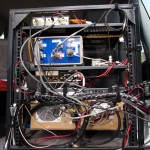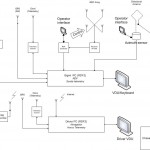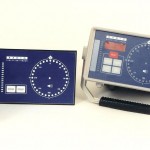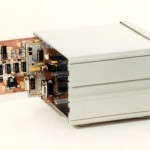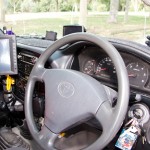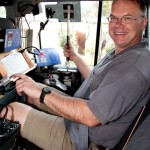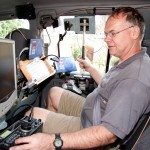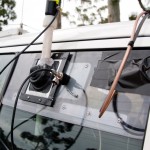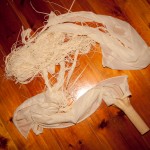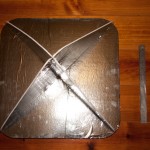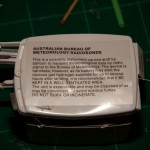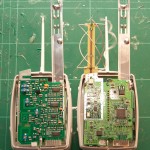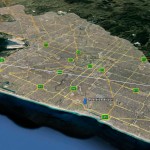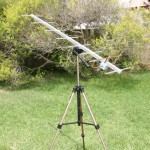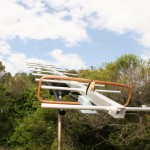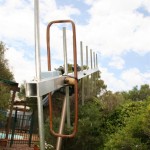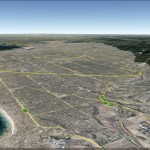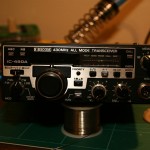A look inside the Project Horus workshop(s)
Whilst we've not seen any Horus launches in the last few weeks, the team have still been busily working away on a few projects in our time off.
Nodepony launch:
One project that's been on the drawing board for a little while now is the planned launch ofВ Nodepony to near space. I'm hoping to get our brave little volunteer off the ground soon, but not before a bit of modification. ![]()
Expect some more details on this one soon... in the meantime the ponies are in my workshop playing with telemetry payloads... none of them have been harmed (yet!) ![]()
Horus 15 flight video:
Grant's managed to put together a great video from the Horus 15 flight footage - no mean feat given the difficult conditions on the day! With very overexposed footage Grant had to do some aggressive colour correction, but the results are a testament to Grant's editing!
Remote RX site:
Another idea we came up with some time ago was to setup an automated remote receive site and have it strategically located in our flight path. The site could then receive telemetry during flights & relay this information via the internet, and when there are no Horus flights the remote receiver could always be used for things like decoding BOM weather balloons or listening in general.
I recently purchased a Funcube Dongle (a low cost, wideband USB SDR) and have put together a low power remote receive machine.
The machine is built around a VIA EPIA mainboard, and should consume only a few watts when running - this is important as it'll be running off a solar array when installed. The system is currently pictured with a 240V AC PSU, but this will be replaced with a DC PSU very soon.
The remote receiver runs Linux & GNU Radio, giving us the ability to demodulate just about anything that fits within the Funcube Dongle's ~80KHz of bandwidth, or (assuming internet bandwidth permits) send the raw I/Q data back to another site.
Mini-Nut:
Mark has been busy working on aВ miniaturized SMD version of my Nut telemetry board, something which is a bit overdue!
Mark's managed to squeeze a pressure sensor and miniSD socket onto the board as well - for the full details check out his blog post.
RDF antennas:
Asides from working on Mini-Nut, Mark's been busy working with Adrian & Matt on an array of new direction finding antennas & systems for Adrian's & Matt's trucks.
Adrian has put together a couple of excellentВ blog posts detailing some of the work they've done.
Repeater Project Horus at Science Alive
Adrian and I got together a few days ago to put together a payload enclosure for his airborne repeater. All told, the enclosure, batteries + antenna weigh in around 800grams.
Adrian's done a great job on the reapter, it works very reliabily and is fully autonomous, including morse ID & automatic beacon mode to assist with finding the payload should something go wrong.
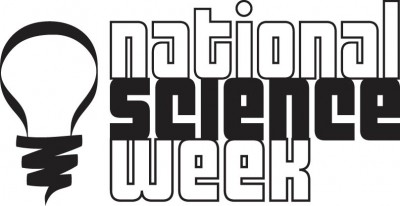
In other news, Project Horus will be making an appearance at Science Alive at the Adelaide showgrounds as part of national science week - we'll have payloads, balloons & tracking equipment on display, as well as a bunch of other toys, robots & gizmo's Adrian's been busy putting together in his time off! If you are free on Saturday or Sunday, do come by!
Future launches
The blog has been quiet since launch due to catching up with real world commitments - thanks to all who have emailed me recently to congratulate us on the launch! ![]()
I am planning on launching more balloons, and have been experimenting with options for flight computers - whilst the Arduino was great, it was somewhat limited by its form factor - ideally future launches will carry a custom flight computer with GPS, radio & SD logging all on the one board.
I have been working on the design of such a board - here's a picture of the current design:
The board is based around 2 ATmega 328P microcontrollers - one acting as the core of the flight computer, the other dedicated to handling telemetry. This will allow the radio telemetry to be offloaded from the core, meaning more can be done whilst the lengthy RTTY transmission takes place.
I've switched from the Lassen IQ GPS module to the Falcom FSA03, which I sourced from Esawdust. This module is far more sensitive than the Lassen, and also features the Sarantel helical antenna, which performs in most any orientation. The module is also capable of providing fix data at 4hz.
The Radiometrix NTX2 25mW transmitter is also present on the board, as is the SD card used for logging. I've also included indicator lights to make launch & setup much easier. The board has a DIL header providing connections to system voltages & data pins on the core for connecting daughterboards which will house additional sensors/equipment.
With the radio offloaded to a dedicated processor, the board will be able to log position, temperature, pressure, humidity much more frequently - resulting in better data at the end of the day.
I've also been experimenting with PCB production - I bought myself a Dremel drill press & some 0.8mm tungsten carbide drill bits, and have whipped up some simple test boards - given that I'd never tried etching PCB's at home, I was rather happy with the results on my first board, an ATmega 328P protoboard whipped up in a couple of hours.
I'm looking at having the main board commercially produced, and will likely hand-etch the daughterboards to go with it.
As for future launches - I plan to launch the original flight computer at least once more, likely quite soon. I'll be experimenting with a few ideas in future launches: higher baud rates, coding (error correction) & eventually bi-directional communication.
Look out for more soon! ![]()
RDF, balloon chasing more updates
A rather large update this time!
I recently caught up with one of the many hams who have emailed me (thanks everybody!) regarding the project - Adrian, VK5ZSN. Adrian has lots of experience in chasing BOM sounding balloons, and has recovered many of them in the past. As well as invaluable input & assistance, Adrian has given me a bunch of stuff for the project - including radar reflectors and radiosondes. He's also offered to test my yagi on a network analyzer so I can work out if it's performing as well as it could be.
Adrian was also keen to show me his RDF setup - a Toyota Land Cruiser kitted out with an amazing array of radio's, computers & custom electronics that Adrian has put together. At the heart of the setup is Adrian's radio direction finder module - a system that Adrian came up with some time ago, it interfaces with both a rotating beam yagi antenna, and performs Doppler based direction finding. The Doppler array (4 1/4waves on the truck roof) is able to give an instantaneous bearing to a radio source without requiring manual input. The output from the system is plotted to a GPS tracked map, to triangulate the location of the source.
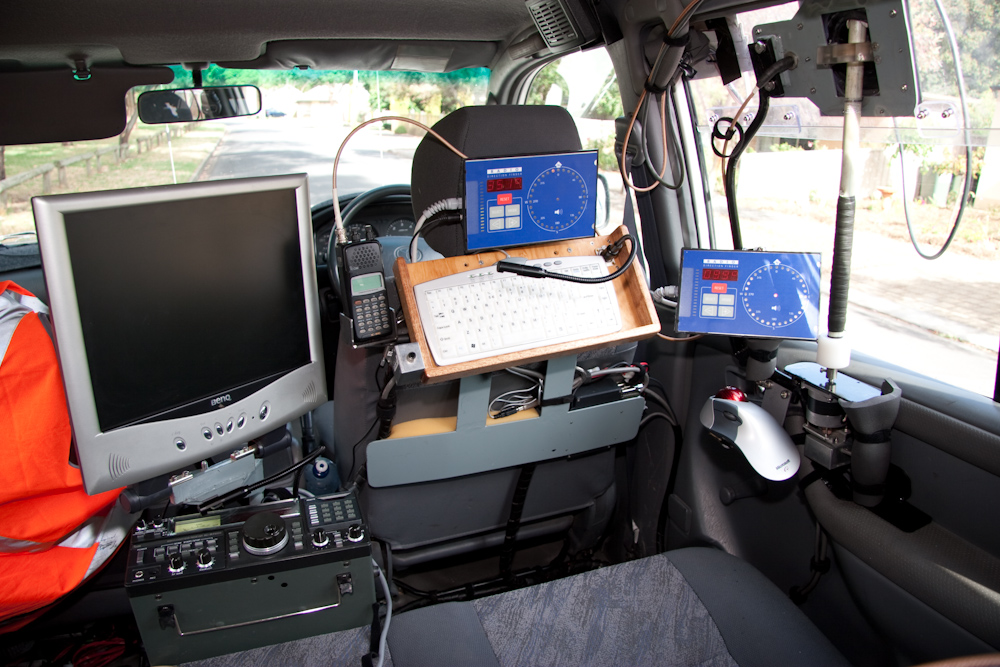
At the controls of Adrians RDF truck
To demonstrate the system, Adrian took me out to chase one of the 2 daily BOM balloons. Predictions run with the CUSF flight predictor suggested that the balloon would land somewhere near Sedan, a manageable distance from Adelaide. Our BOM primarily launches analogue radiosondes (Vaisala RS92K) - these 'sondes do not include GPS receivers, they are tracked by ground based radar. This meant we wouldn't be able to track the Sonde's course by GPS, the only way to locate the 'sonde is via RDF techniques.
We headed out towards Sedan hill, so that we would have a good vantage point & be able to track the 'sonde as it came down. No problems up until this point - I was operating the RDF equipment, after a short while spent learning to work everything, I was confident that we had a good idea of where the balloon was. However, we'd forgotten to start the radiosonde decoding software at the beginning of the flight, and due to the very limited information broadcast by the analogue 'sonde in question, we didn't know if the balloon was still ascending, or if it had started to descend.
A short while after we arrived at Sedan hill, the signal faded, then abruptly disappeared. Unsure if the 'sonde had landed or if it had failed, we set off down the last vector we'd plotted. 10 minutes later, we still hadn't heard the signal, until we passed a field & I heard one of the radios in the truck pick it back up again - but this time on a totally different frequency! It looks as though the bump on inpact had upset the analogue radiosonde's crude transmitter (adjusted with trimpots by the looks of things) & shifted its frequency. A short while & a few vectors later, we were quite confident we'd found it.
A short trek out into a wheat field netted us the radiosonde & radar reflector, and a very burst balloon.
As well as the analogue radiosonde we recovered, I have in my possession a more sophisticated digital 'sonde that Adrian gave me. Whilst the temperature and humdity sensors these carry are good for a single use only (needing calibration), the pressure sensor still functions perfectly - I powered up the radiosonde & decoded it's output, and it was reporting 14.7 PSI. I'm interested to see if I can extract one of these pressure sensors and interface it with my Arduino flight computer.
I've also started work on a daemon to plot information directly from my telemetry in OziExplorer, giving me the position of my balloon live on a map without needing an internet based service such as Google Maps or Google Earth, as internet access probably won't be available in regional areas. OziExplorer provides a great API that I'm using to do this.
Steve, another balloon enthusiast from RandomSolutions has kindly donated a GPS module which I'm planning to use on a test balloon flight. I'm waiting on my balloons from Kaymont, I suspect shipping may have been delayed given the Christmas rush.
A few more photos of the RDF truck & balloon below:
- Adrians RDF truck
- Adrians RDF truck
- At the controls
- Adrians RDF equipment
- Adrians RDF truck block diagram
- Adrians RDF unit
- Adrians RDF unit
- Drivers seat
- Adrian manning the contols
- Adrian manning the controls
- Through-window beam mount
- Remnants of the BOM balloon
- Radar reflector
- BOM radiosonde
- Analogue (left) digital (right) sondes
Another radio test a new yagi
I made up 1.3m yagi yesterday - the biggest that'll fit in the boot of my car ![]() . I used K7MEM's excellent yagi designer to come up with a plan, and cut the pieces from aluminum tubing, which I had TIG welded at a local machine shop for $20. My folded dipole is made from a length of copper tubing, but I don't have much faith in it - it was difficult to get it sized correctly. I suspect I may need to swap it for a better one after I do some proper testing on the antenna.
. I used K7MEM's excellent yagi designer to come up with a plan, and cut the pieces from aluminum tubing, which I had TIG welded at a local machine shop for $20. My folded dipole is made from a length of copper tubing, but I don't have much faith in it - it was difficult to get it sized correctly. I suspect I may need to swap it for a better one after I do some proper testing on the antenna.
We tested the radio again last night, using the coat-hanger yagi, and the larger yagi. The coat-hanger yagi was brilliant considering the effort invested, and is much more practical than the large (1.3m) yagi. It's nowhere near as directional as the larger yagi, given the lower number of elements, and is extremely lightweight - so it's super easy to use with 1 hand.
As I found out, two hands are needed for the large yagi, even though it's lightweight (being aluminum). Even using two hands, it's very difficult to keep it exactly on target, and it's extremely directional. I've since made mounted it to the quick release block on my tripod, which should keep it pointing where we want.
We tested the same distance as previously - from the airport to Belair, as well as going out further with the yagi's. The coat-hanger yagi performed brilliantly at the airport, getting an excellent signal (where the 1/4 wave whip we used last time struggled). Going out further to outer harbor, the coat-hanger yagi was struggling to pickup anything decodeable, but the larger yagi did the trick. Total distance from outer harbor to the transmitter was 27.5km, with a very poor line of sight, and only 300m or so at the transmitter side. Overall quite successful, though I suspect the large yagi is capable of much better performance with some tuning.
- Windy point -> Outer harbor
- New yagi mounted on the tripod
- Horizontally polarized
- Vertically polarized
Radio testing
I had a chance to test the range of my 25mW Radiometrix NTX2 last night. Whilst we couldn't simulate the true line of sight conditions that we'll see during balloon flight, a few friends and I tested the range of the payload in various conditions. The payload spend the majority of the time on the backseat of my friends car, which would have no doubt limited its range. I used a 1/4 wave piece of exposed coax core as a receiving antenna, sticking it out of the window of my car.
Incidentally, it turns out my car locking/alarm remote is in the same band as the NTX2: ~433mhz, meaning that I wasn't able to unlock/start my car - even after trying my spare keys & scratching my head for a good while.
On flat, straight road with minimal obstruction (a few trees & streetlights), we achieved about 3km of useful (decodeable) range. Given that the antennas were only about 1m above ground level (and probably the street width - it was lined with buildings), we would have had insufficient Fresnel clearance, which would have been a limiting factor.
We decided to position the payload somewhere which might give it better coverage, so headed to Belair, one of the more elevated suburbs in Adelaide. We hoped to test from Windy Point (an elevated lookout with a good unobstructed view of Adelaide), but after arriving and finding a gentleman who was a little too interested in making conversation, we found the prospect of being stabbed a little grisly, so left to find another spot. We settled on a street which was partially shielded by trees & houses, but gave us the best possible line of sight.
One car set off back down the hill to see what sort of range we could achieve - we ended up at the airport (10km away as the crow flies), before I broke the antenna sticking out of my window & we called it a night. Given the pitiful antenna I was using on the receiver & the fact that the NTX2 has the same sort of transmit power as a garage door opener, I was pretty impressed with the range.
I also received another radio I picked up cheaply on eBay today - an ICOM 490A. It's nowhere near as fully featured as my 706, but it'll do SSB on the 70cm band, so it'll decode data just fine.
- Radio testing
- ICOM 490A
